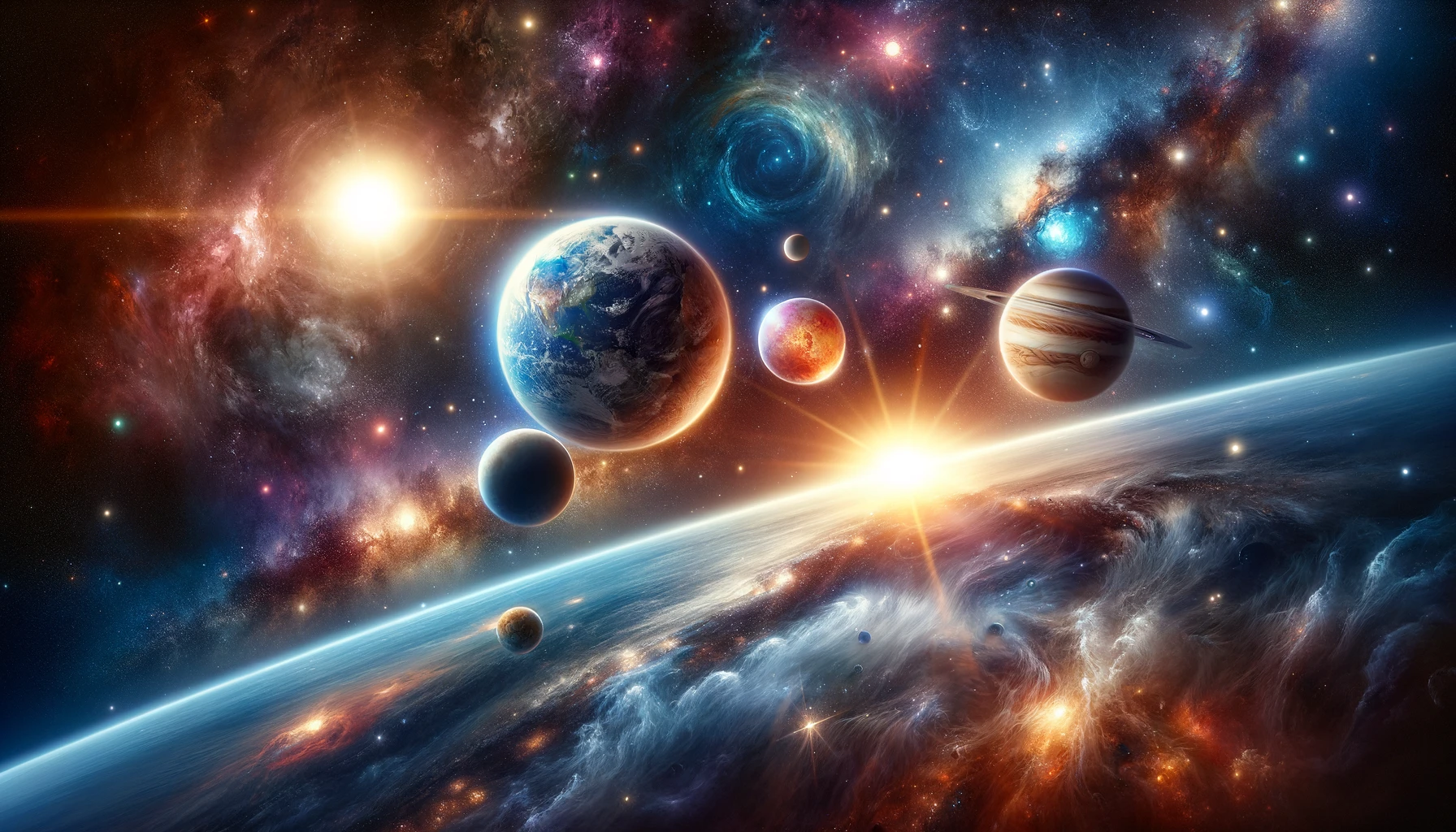Looking up at the stars at night it is easy to imagine that we are sitting at the center of the universe. Astronomers have shown that this is not the case – we are not even at the center of our own solar system. So where is the center of the universe? We asked 6 experts in astrophysics, astronomy and cosmology, ‘Does the universe have a center?’, here is what they said. This consensus is based on 6 experts answers from this question: Does the Universe have a center?
How did the universe begin?
Professor Robert Russell, a cosmology expert from the Graduate Theological Union in the USA, refers to the beginning of the universe as “‘t=0’, an event 13.8 billion years ago when the universe was of zero size, infinite temperature and infinite density, the moment the universe began expanding”. This moment is called the ‘Big Bang’. This period of cosmic inflation, which lasted just fractions of a second, resulted in the creation of the universe.
If the universe is expanding, it makes sense to assume that the center of the universe is the position where the Big Bang happened, however it is not that simple.
Learn more with Consensus AI Academic Search Engine:
💫How did astronomers determine that the universe is expanding? ✨Is the universe expanding uniformly?Where did the Big Bang happen?
Dr Steven Rosen, an expert from the City University of New York in the USA, says “The notion of a ‘center’ is spatial: to center something is to situate it in space. Conventional thinking tells us that the universe is a material object in space, and that this ‘object’ began expanding in the aftermath of the big bang. So we might say on this basis that the center of the universe is the point of origin from which the big bang arose.” He goes on to say that “However, this account may be rather misleading because the big bang was not an explosion of matter in a pre-existing space but an explosion of space itself, an emergence of space from a pre-spatial origin. Therefore, if space did not exist at the origin of the universe, this origin cannot constitute the center of the universe.”
Professor David Spergel, an expert in astrophysics and astronomy from Princeton University in the USA, says “A good physical model for our universe is an expanding balloon: we live on the surface of the balloon and every other galaxy is a spot on the balloon. This is a two dimensional model for our universe as the balloon surface is two dimensional so we will have to ignore the third spatial dimension to make a good visual model. The radius of the balloon is time. As the universe expands, the balloon grows in size. … If we run time backwards, the balloon slowly collapses. As it collapses, galaxies get closer and closer together and the universe gets denser and denser. As the balloon shrinks to zero radius, we are simulating going back to the moment of the ‘big bang’ or the initial singularity.” He explains that “While this moment happens at a unique moment in time, it happens everywhere in space. There is no special place on the balloon. Similarly, there is no special place (or center) to the universe. The big bang happened everywhere”
Learn more with Consensus AI Academic Search Engine:
⟢ Did the Big Bang create space itself? 🎈 How is the concept of an expanding balloon used to explain the universe's expansion?What is the evidence for the Big Bang?
If the Big Bang happened billions of years ago, how can we study it?
In the 1920s, astronomers were able to measure the speed at which distant objects in space were moving. They found that objects that are further away from earth are moving away from us faster than objects that are closer. This was evidence that the universe is expanding – like Professor Spergel’s example of all galaxies being spots on an expanding balloon, spots that are further away are moving the fastest. Since then, high power telescopes have also allowed astronomers to observe clouds of gas that are so far away that the light from them take billions of years to reach earth. This means we are able to directly observe how these bodies looked like billions of years ago.
Another type of evidence is the cosmic microwave background. Dr Andrew Howell, an expert in cosmology and astrophysics from Las Cumbres Observatory in the USA, says “The Big Bang happened everywhere all over the universe. Each observer sees the afterglow of the Big Bang (the cosmic microwave background) all around them, but this is true for every observer.”
The takeaway: The universe has no center.
Learn more with Consensus AI Academic Search Engine:
🌌What is the Big Bang theory? 🔭What role do high power telescopes play in studying the early universe? ⋆⭒˚。⋆Are galaxies moving away from us at different speeds based on their distance? ☄️Does the cosmic microwave background support the Big Bang theory?